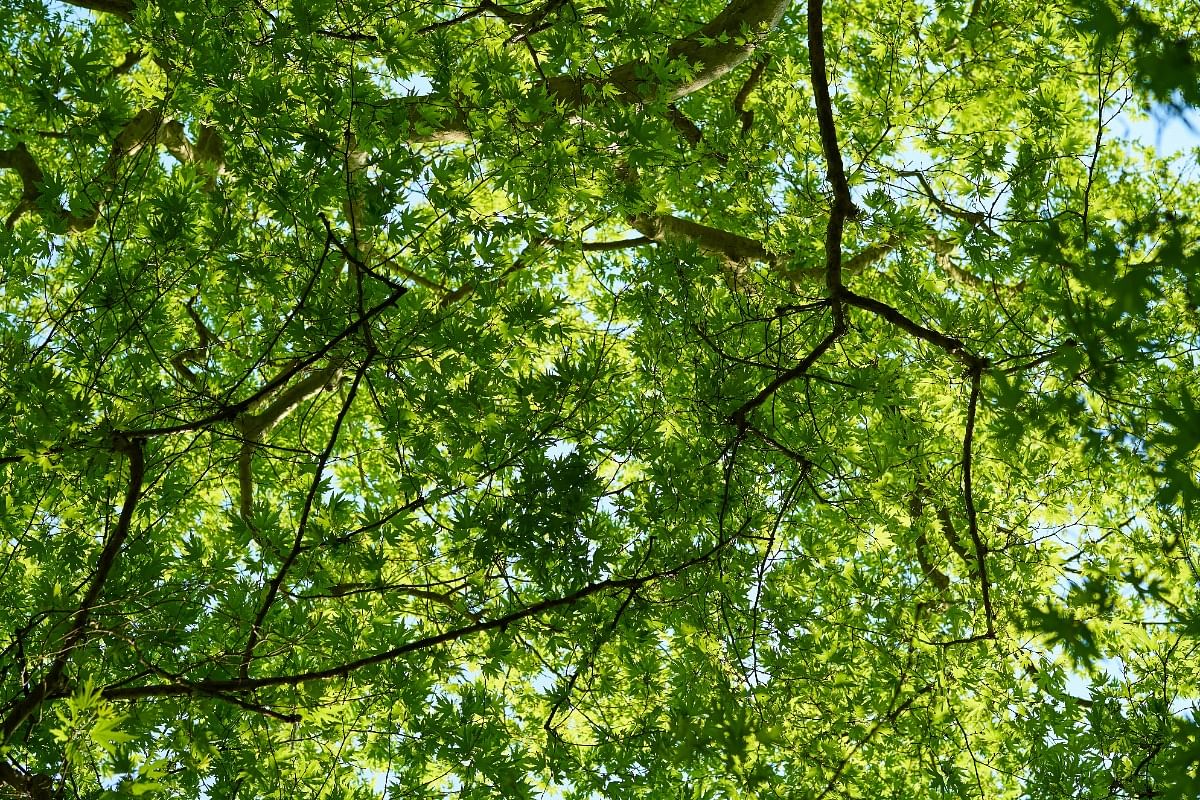Get storm-ready! Be hurricane-prepared BEFORE the season starts.

Who Can Tell Me What’s Wrong with My Tree?
Trees are vital components of both our natural landscape and urban environments, providing beauty, shade, and habitat for wildlife, while also offering practical benefits like improved air quality and reduced energy costs. However, just like any living organism, trees require careful and regular maintenance to remain healthy and safe. One crucial aspect of tree care is understanding the optimal timing for various services like pruning, planting, and removal. The timing of these services can significantly impact the health of the tree, its growth, and its ability to withstand stresses like pests, disease, and harsh weather. In this blog post, we will explore the best times of year to perform different tree services to ensure your trees remain vibrant and robust throughout all seasons. Whether you are a homeowner, landscaper, or city planner, knowing when to care for your trees can make a big difference in the longevity and health of these essential natural assets.
Understanding Tree Biology and Seasons
Trees, much like any other living organism, follow a cyclical pattern of growth and dormancy influenced by seasonal changes. Understanding these patterns is crucial for effective tree care. During the spring, trees enter a growth phase where new leaves and branches begin to form. This period of vigorous activity relies on the energy stores from the previous year. In summer, this growth continues but at a slower pace as the trees begin to prepare for the harsher conditions of fall and winter.
As temperatures drop in the fall, trees enter a period of preparation for dormancy. They begin to shed leaves, which is not just a picturesque aspect of fall but a crucial biological process to conserve water and energy. Winter marks the dormant phase for most tree species. During this time, trees conserve energy, and their metabolic activities slow down significantly. This dormancy period is critical as it allows trees to withstand cold and adverse weather without the stress of maintaining full biological functions.
Each season's unique conditions can affect different tree species in various ways. Deciduous trees, for instance, are best serviced during the dormant phases of late fall and winter when they have shed their leaves and their structure is fully visible, making it easier to identify and address any issues.
Best Time for Pruning
Pruning is a vital aspect of tree maintenance that not only helps shape the tree but also encourages healthy growth and reduces the risk of disease and pest infestation. However, the timing of pruning can significantly affect the tree's health.
Winter: Pruning during the dormant season, typically late winter before spring growth starts, is generally best for most trees. This timing allows for minimal stress on the trees since they are not actively growing. Dormant pruning helps prevent the spread of disease, as many pathogens are inactive during this time. Additionally, the lack of leaves provides a clear view of the tree structure, making it easier to make strategic cuts.
Spring: For some trees, especially those that bloom in spring, pruning should be done immediately after they finish blooming. This timing ensures that the pruning does not affect the bloom the following season. Spring pruning is also used to remove any winter damage to branches and to prepare the tree for the growing season.
Summer and Fall: Pruning during these seasons is generally discouraged unless necessary. Summer pruning can be used to direct growth by slowing the branches you don’t want; this is often referred to as “summer shaping.” In fall, however, trees are preparing for dormancy, and new cuts can be too slow to heal, leaving the tree vulnerable to infection and disease. The only exception is the removal of dead, diseased, or safety-hazard branches, which can and should be done anytime they are noticed.
Understanding the right time for pruning not only enhances the aesthetic appeal of trees but also bolsters their health, ensuring they continue to thrive year after year.
Ideal Seasons for Tree Planting
Selecting the right season for planting trees is crucial for their survival and growth. The best times to plant trees are typically during the spring and fall, when weather conditions are mild and conducive to root development.
Spring: Planting in early spring, just as the frost has lifted and before the onset of summer heat, allows young trees to establish roots in cool, moist soil. This timing gives them a head start on the growing season, providing ample time to strengthen before the harsher summer conditions. Spring is especially favorable for planting deciduous trees, which can benefit from the full growing season to develop a robust root system.
Fall: Many arborists recommend planting trees in the fall because the cooler temperatures help encourage root growth. In the fall, trees can focus on root development rather than foliage, which is critical for their survival and stability. This is particularly advantageous in areas with hot summers and cold winters. Planting trees in the fall also takes advantage of increased soil moisture, which is beneficial for root hydration.
When planting trees, it’s important to consider the specific needs of the tree species and the local climate conditions. Each species may have its preferred planting time, which can ensure better growth and adaptability in its new environment.
Tree Removal Considerations
While planting and nurturing trees are typically the focus of tree care, sometimes the removal of a tree becomes necessary. The best time to remove a tree largely depends on the tree’s condition and the reasons for its removal.
Winter: The dormant season is often the ideal time for removing trees, particularly large ones. Without leaves, it’s easier to assess and handle the tree’s structure during removal. The frozen ground also provides a stable platform for heavy equipment, minimizing damage to the surrounding landscape. Also, with decreased sap flow in winter, there is less stress on the tree, reducing the chance of disease spreading to neighboring trees.
Emergency Removal: Regardless of the season, trees that pose immediate risks due to damage, disease, or destabilization should be removed as soon as possible to prevent potential harm. Emergency removal may be necessary after severe weather events like storms or hurricanes, or when a tree is found to be structurally unsound.
In any case of tree removal, it’s crucial to consult with a professional arborist to ensure the process is conducted safely and efficiently. An arborist can assess the situation and decide the safest method for removing the tree, considering its size, location, and the surrounding area.
Pest Control and Tree Health Maintenance
Effective pest control and maintenance of tree health are crucial to ensuring trees thrive in their environment. The timing of these interventions can vary depending on the specific issues and local conditions.
Spring and Summer: These seasons are critical for proactive pest control and disease prevention. As trees bloom and new growth appears, they become more susceptible to insects and diseases. Early spring is an ideal time for applying preventive treatments such as fungicides and insecticides. This helps protect the trees during peak growth periods when they are most vulnerable. Regular monitoring throughout these seasons is also essential to catch any signs of infestation or disease early, which allows for more effective treatment and a higher chance of recovery for the tree.
Fall: Preparing trees for winter is another key aspect of maintenance. This includes not only pest control but also general health checks to ensure trees are strong enough to withstand the colder months. Fall treatments might include applying anti-desiccants to prevent moisture loss, mulching to insulate roots, and last-minute pest treatments to manage any late infestations. It’s also a good time to address any nutrient deficiencies with appropriate fertilization, which can help strengthen the trees against the harsh winter weather.
Regional Considerations
The optimal timing for tree service can significantly vary based on regional climate conditions and local weather patterns. What works in one area might not be suitable in another due to differences in temperature, rainfall, and the types of pests and diseases prevalent in the region.
Colder Climates: In areas with harsh winters, early fall or late spring are typically the best times for most tree services to avoid the extremes of winter. Winter services might be limited to emergency or non-invasive procedures due to the risk of damage from frozen conditions.
Warmer Climates: For regions with mild winters, tree care activities can often continue year-round. However, the focus might shift towards preparing for the dry or rainy seasons, depending on local weather patterns.
Variability by Tree Species: Additionally, the specific type of tree also dictates the care schedule. For instance, some species might be particularly susceptible to pests during certain months, or may benefit from pruning at times that differ from other species due to their unique growth patterns.
Given these variations, it is often helpful to consult with a local arborist who understands the regional challenges and can provide tailored advice. This ensures that tree care activities are performed at the optimal times, enhancing the health and longevity of the trees in different environmental conditions.
Service Your Trees Any Time of Year with Tangi Tree
Ready to ensure your trees are healthy, vibrant, and beautifully maintained throughout the year? Our team of licensed arborists is equipped with the knowledge and expertise to provide top-notch care tailored to your specific regional and species needs. Whether it’s pruning, planting, pest control, or emergency removals, we’re here to help your trees thrive in every season. Don't wait until it's too late; schedule a consultation with Tangi Tree, and let us show you why we are the preferred choice for tree services in your area. Reach out to us now and give your trees the care they deserve!






